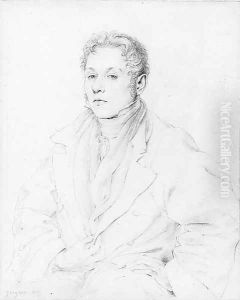Jean-Marie-Raphael-Leopold Massard Paintings
Jean-Marie-Raphael-Leopold Massard, commonly known as Léopold Massard, was a notable figure in the art world of the 18th and 19th centuries, primarily recognized for his work as an engraver. Born in 1775 in Paris, France, Massard was part of a period teeming with artistic evolution and revolution, a time when the political upheavals of the era significantly influenced the arts.
Massard's career unfolded during a transformative period in French history, which encompassed the end of the Ancien Régime, the French Revolution, the Napoleonic Wars, and the Restoration period. These events provided a dynamic backdrop for artists, who often found themselves documenting history or contributing to the powerful propaganda machinery of their times.
Léopold Massard trained under the guidance of his father, Jean Massard, who was also an accomplished engraver. This apprenticeship allowed him to develop a meticulous technique and an eye for detail, which would come to characterize his extensive body of work. Massard's engravings often depicted historical scenes, portraits, and reproductions of paintings, showcasing his ability to translate the essence of a painting into the medium of engraving with fidelity and artistic sensitivity.
Throughout his career, Massard contributed to the dissemination of art by making it accessible to a broader audience. His engravings reproduced the works of renowned painters, allowing individuals who could not visit galleries or own original paintings to appreciate these works in their own homes. This was a significant contribution to the democratization of art during the period.
Léopold Massard passed away in 1843, leaving behind a legacy that not only reflects the technical prowess of a master engraver but also provides a visual chronicle of an era marked by intense social and political change. His works remain a testament to the skill and dedication of engravers in the period before photography became the primary medium for image reproduction.
